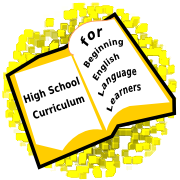- Introduction and Language Development
-
- Correctly identify and use the relationships before and
after.
- Distinguish between middle and between.
- Correctly identify and use the relationships is more than,
is less than, and is equal to.
- Correctly identify and use the relationships above,
below, top, and bottom.
- Correctly identify and use the directions up, down,
left and right.
- Read and write cardinal numbers.
- Read and write ordinal numbers.
- Determine and apply the meaning of add, subtract,
multiply, and divide.
- Whole Number Arithmetic
-
- Add and subtract multiple digit whole numbers.
- Add and subtract signed whole numbers (Integers).
- Multiply two whole numbers less than or equal to twelve from
memory.
- Multiply a multiple digit number by a one digit number.
- Multiply two multiple digit numbers.
- Divide a multiple digit number by a single digit divisor.
- Divide a multiple digit number by a multiple digit divisor.
- Quickly divide and multiply by powers of ten.
- Define the square and square root of a number.
- Name the perfect squares and find the square roots of perfect
squares.
- Simplify expressions with whole number bases and exponents.
- Simplify numerical expressions using order of operations.
- Identify the value of whole number points on a number line.
- Number Theory
-
- Recognize and identify prime and composite numbers.
- Write a composite number as a product of prime factors.
- Find all factors of a number.
- Find multiples of a number.
- Find the greatest common factor (GCF) of two or more numbers.
- Find the least common multiple (LCM) of two or more numbers.
- Fractions
-
- Identify the numerator and denominator of a fraction.
- Define fraction, denominator, and numerator.
- Read fractions out loud, and write a fraction after hearing it spoken.
- Recognize and find equivalent forms of a fraction.
- Write fractions in simplest form.
- Identify proper fractions, improper fractions, and
mixed numbers.
- Convert between mixed numbers and improper fractions.
- Add and subtract fractions with like denominators.
- Add and subtract fractions with unlike denominators.
- Multiply two fractions.
- Divide two fractions.
- Identify rational valued points on a number line.
- Convert between a ratio and a fraction.
- Recognize proportions as equivalent fractions.
- Arithmetic of Decimals
-
- Identify place value of a digit in a decimal number.
- Read and write decimal numbers.
- Add and subtract decimal numbers.
- Multiply and divide decimal numbers.
- Add, subtract, multiply, and divide decimal numbers with whole
numbers.
- Quickly multiply and divide a decimal number by a power of ten.
- Convert a decimal number to a fraction.
- Convert a fraction to a decimal number.
- Percents
-
- Recognize, read, write, and interpret percents as a part of a hundred
(a fraction with denominator 100).
- Convert a number between its percent, decimal, and fraction forms.
- Find the percent of a number.
- Determine the percentage one number is of another number.
- Find the number which is a given percentage of another number.
- Solve real world application problems using percents.
- Number Sense
-
- Identify place value of a digit.
- Round whole numbers to the nearest tens, hundreds, thousands, ten
thousands, hundred thousands, millions, ten millions, and hundred
millions.
- Compare and order integer numbers.
- Compare and order decimal numbers.
- Determine the value of a point on a line segment given end point
values and marked parts.
- Compare and order rational numbers.
- Round decimal numbers to the nearest, tenth, hundredth, thousandth
ten thousandth, and hundred thousandth.
- Compare and order real numbers.
- Algebra
-
- Identify the x-axis, y-axis, and origin of a
coordinate plane, and name the four quadrants.
- Plot points in a coordinate plane given coordinates,
and name the coordinates of a point given its graph.
- Recognize absolute value as a measure of distance from 0 on
a number line.
- Find the distance between two points in a coordinate plane.
- Evaluate algebraic expressions using order of operations.
- Recognize equations and inequalities as mathematical
sentences which have truth values, and contrast this with
expressions, which do not.
- Translate from words into the language of Algebra.
- Represent quantities with variables.
- Simplify real number expressions.
- Identify 0 as the additive identity and 1 as the
multiplicative identity.
- Find the additive inverse and multiplicative invese of a
given number.
- Identify properties of real numbers.
- Recognize and identify polynomials.
- Evaluate polynomials for a given value of x.
- Solve simple equations.
- Solve multi-step equations.
- Graph linear equations.
- Evaluate functions to find an output given an input.
- Create a table of values of a function.
- Graph a function.
- Geometry
-
- Recognize and identify common geometric shapes.
- Use measurement tools to find lengths and angle measures.
- Find the area of common geometric shapes including
squares, rectangles, triangles, parallelograms,
trapezoids, and circles.
- Find the perimeter of a polygon.
- Find the circumference of a circle.
- Find the volumes of rectangular solids.
- Find the volumes of cylinders, spheres, and
cones.
- Use triangle sum to find the missing angle measure of a triangle
given two angle measures.
- Use triangle inequality to determine if three given lengths
could be the sides of a triangle.
- Use Pythagorean theorem to determine if a triangle with three
given lengths is a right triangle.
- Use mathematical reasoning to draw conclusions from available
information.
- Set Theory
-
- Identify elements in common sets of numbers, including
odd, even, positive, negative, whole,
integer, rational, irrational, positive, and
negative numbers.
- Use basic set relations and operations including subset,
membership (element of a set), union, and
intersection.
- Apply the basic set relations to the common sets of numbers.
- Data Analysis
-
- Find the range of a set of data.
- Find the mean, median, and mode of a set of
data.
- Make and interpret line graphs and bar graphs from a set
of data.
- Make and interpret pie charts from a set of data.
- Make stem-and-leaf plots from a set of data.
- Find the range and measures of central tendency from
stem-and-leaf plots.
- Use data to model real world events.



